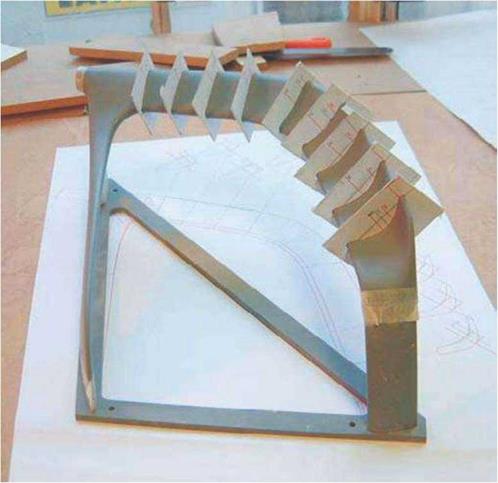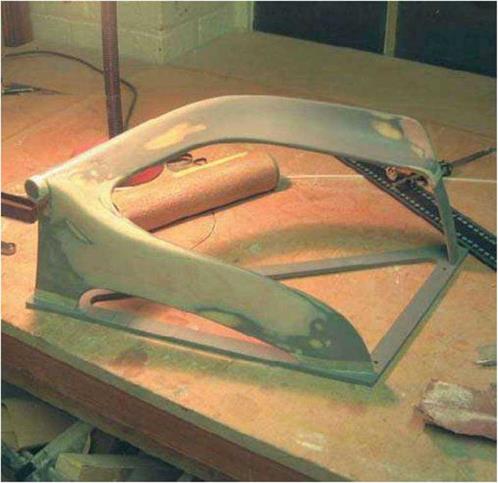“I don’t think you stumble across innovation,” says Luke Pearson, of PearsonLloyd. “You have to find a Strategy to get there.
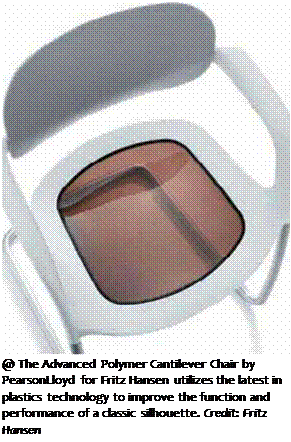 “You have to find a way to create from a blank canvas by surrounding yourself with the components of knowledge. We design from the ground up so we can always ask first, ‘Why are things like this?’ This is the only way to find innovation.”
“You have to find a way to create from a blank canvas by surrounding yourself with the components of knowledge. We design from the ground up so we can always ask first, ‘Why are things like this?’ This is the only way to find innovation.”
When design partners Luke Pearson and Tom Lloyd decided to apply this strategy for innovation to what Pearson calls the “old and established archetype” of a cantilevered chair, they set out first to understand why so little had changed in the chairs’ design over the years. Their answer lay in the materials. “The steel tubes at the heart of these chairs are a very easy material to use. It’s cheap and works well,” says Pearson, “However, in the last five to seven years, there’s been huge development in plastic technology. The reason for working in plastics is that most cantilevered chairs have a welded structure when you get to the seat. Welding more steel under the seat is heavy and takes time, so you’re adding weight and assembly time,” he notes. “As industrial designers, we started looking at bikes and other high-performance items and saw that plastics were taking the place of metals and alloys.” After consulting with some plastics engineers, they began to find materials that might work. “We came up with the structural principles early on, and the beauty of what we got is that it reduced the chair to as few components as possible.”
|
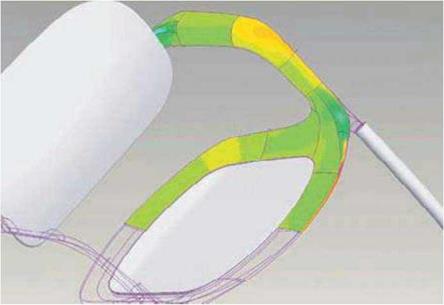
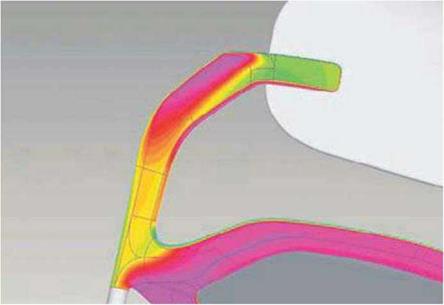
|
|
|
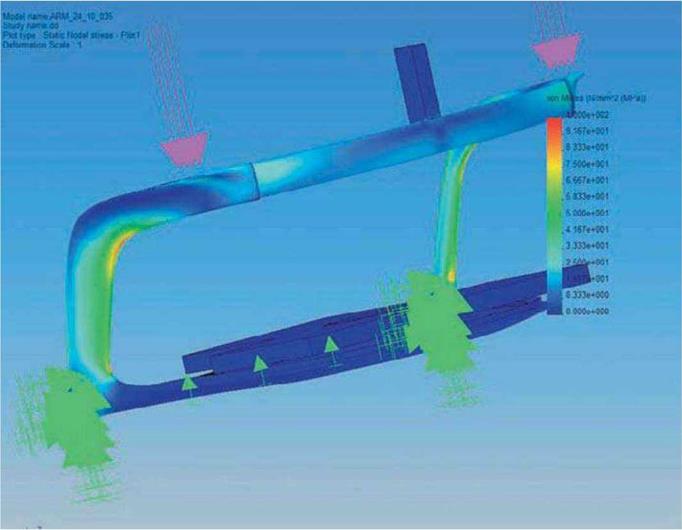
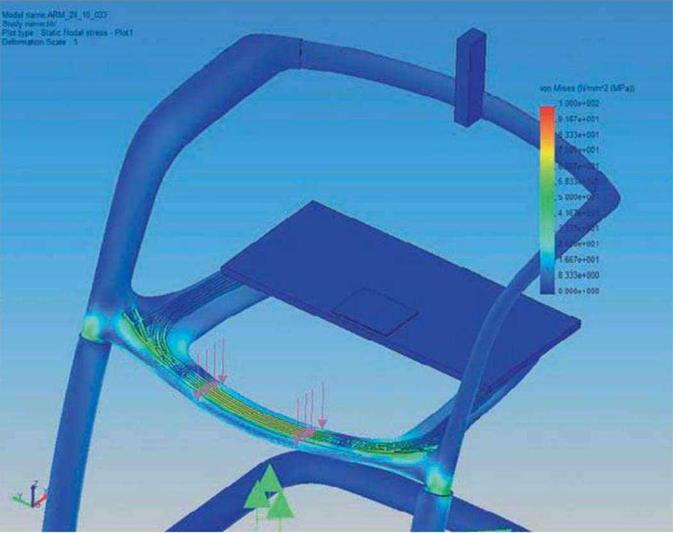
Pearson also points out that using plastic lends some fundamental ergonomic benefits to the chair. “When you weld the seat, you kill some of the dynamic qualities of the cantilever. And this is its major advantage over a four-legged chair. When you sit in a regular chair, you get a shock loading into the spine because the back legs don’t bend. By using plastic, we could maximize the dynamic quality of the chair. When you sit in our cantilevered chair, the front legs bend to reduce shock loading. We also designed the seat platform in such a way that it flexes progressively,” Pearson continues, “so at the front of the chair where it needs maximum stiffness, there’s no flex; in the back, there’s more. The seat platform responds to your movement, so you don’t need a cushion. You have a flexible, supportive structure that responds like a human being stands, by shifting weight from one leg to another.”
The plastic also confers another advantage important to Pearson: “It has a long life and it’s possible to recycle it. We think you have a responsibility to consider how much material you’ll use. We didn’t want to use any more material than we needed to. The life energy cost of the chair, the material usage, is equivalent to driving a European car about 120 kilometers,” he notes. The plastic itself is used primarily in office furniture, but also for automotive parts and other components where high performance is required. Made with a high glass fiber content, the resulting material is, according to Pearson, stronger than aluminum, with the added benefit of greater flexibility, yet has a high-tensile capacity.
The completed chair is actually constructed of several different materials. While the main skeleton is ISEF plastic, the central section of the seat pan is polycarbonate, the backrest is ABS plastic, and the bottom tubular section is steel. Perhaps most interestingly given this variety of parts, “There are no fixings on the chair,” Pearson points out. “Everything is snap-fit except for the back, which is glued to the arms.”
PearsonLloyd developed the chair with their own, in-house prototyping capability that balanced technology and old-fashioned handwork. Pearson fears that, “Computers are dumbing down that intuitive difference you get between people. Programs work the same way no matter who is working on it. They’re a tool, but not a creative tool. Of course, we do a 3D computer drawing,” he says, “but you need to have a one-to-one model. The computers were used to verify the stress analysis and minimize the use of material. The most important thing is that with all the technology and computers, there’s nothing like carving a complex form by hand and seeing it emerge in front of you.” He explains their process: “What we did in the studio to develop the design language, was we carved it by hand out of blocks of hard foam until it looked right. It’s a little bit like looking at a car and one tiny dent will change the entire line. In some cases, we’d sand off a millimeter to change the way the light fell on a curve. This is so vital to making something for the human scale. The emotional involvement is dependent on sight and touch. Which is why I think as a designer we have to be very wary of the design process. We can’t think that because it looks a certain way on a computer screen, that’s the only way. There’s an awful lot of intuitive ability
that’s relevant to making things by hand. We had a parallel process of engineering running with aesthetics at all times. It was very inefficient and labor intensive. But at the end of the day, what we’ve got is what we want. It’s all about the communication between the hand and the eye, as they are the two portals through with you judge something three dimensional.”
Pearson and his team also balanced other demands as they developed their cantilevered chair. “There are two great extremes that drove us,” he says. “One is beauty. If a thing is beautiful and compelling, people will look after it, and this is a very good way to create a value system in objects. We need to do this because we’re creating so much environmental damage. And it should also be as efficient in manufacturing as possible. We try to balance our design ambitions with those things at both ends of the spectrum,” he explains. “There’s a great pleasure as a designer to know that you’ve done both to get something to be beautiful and compelling, and also that, when someone looks into it, they’ll understand how much careful thought goes into how and why it’s made.”
Looking back at their creation now, Pearson says the thing that surprises him most is quite simply that it works. “That’s the wonderful thing,” he says. “We set off with a dream of producing this beautiful, minimalist, sculpted object, and without sounding arrogant, I have to say that we we’re very happy with it. It’s wonderful to spend two and a half years on something, and then look at it and see exactly what we wanted.” He pauses and adds, “In fact, it turned out better than what we wanted.”
|
|
||
© The high-tech materials mix in the Advanced Polymer Cantilever chair allowed PearsonLloyd to push the design of this “old and established archtype” to a more comfortable and elegant form. Credit: Fritz Hansen

